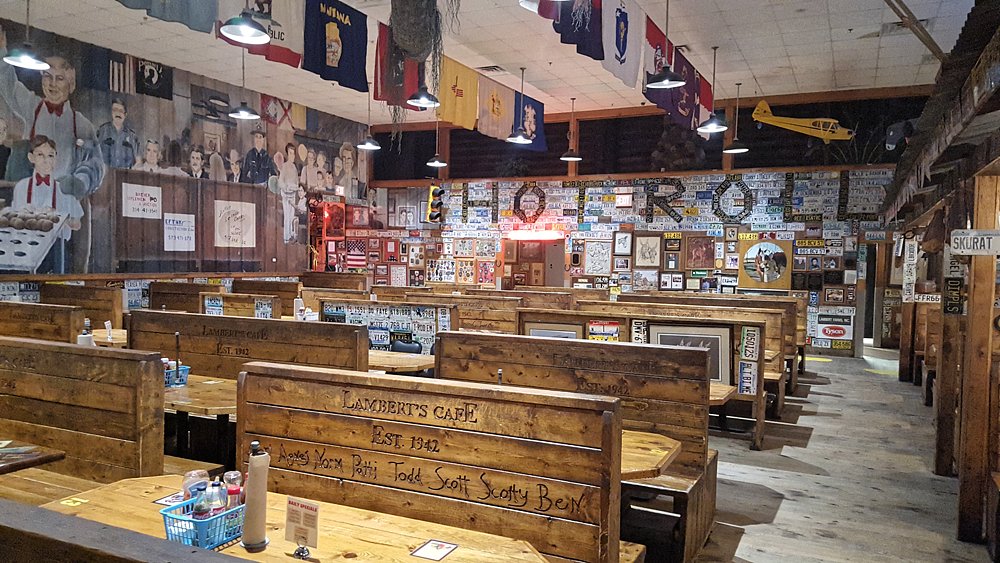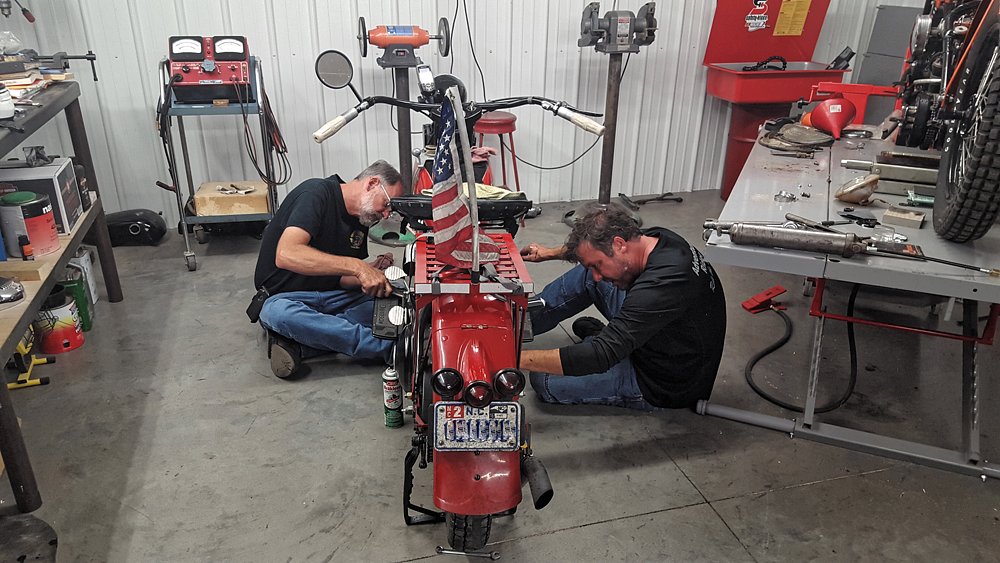No matter what type of motorcycle you ride, tackling a cross-country trip is a serious challenge. Part one: North Carolina to Kansas.
Even if you are rolling on a factory-fresh Gold Wing festooned with every farkle known to man, you still have to contend with bad weather, discourteous drivers, long days in the saddle, etc. So when I tell you that I was a little anxious about making the trip on a motorcycle that’s more than 80 years old, cruises at 50 mph and has a total-loss oiling system, I think you can understand my concerns. Still, I had built this 1933 Harley-Davidson VL to go the distance and I wasn’t going to let a handful of “what ifs” deter me. I found one other rider crazy enough to join me on this 3,600-plus-mile vintage odyssey, and with me astride my VL and Tim on his 1934 VLD, we set out for the Pacific Ocean, laden with spare parts, tools and our combined wits to see us through.

I’ve lived in North Carolina all my life, and while I’ve always enjoyed being a few hours away from the beach, never has it been more convenient than when I wanted to do a coast-to-coast ride. So on a sunny Saturday morning in September, we made our way to the Crystal Coast, stopping at the beach just long enough to take some parting photos before turning the bikes westward and riding 200 miles back to my house. I know it sounds lame, but it was the best place to stop for the night between Emerald Isle and California and I saw no reason to pass up sleeping in my bed one last time before the trip began in earnest.

Heading out from my house the next morning, we rode due north into Virginia before angling westward. While this part of the country is often seen as a motorcycle Mecca, we both had ridden hundreds of miles in our “local mountains” and did not spend any more time than necessary crossing the Blue Ridge Mountains. It wasn’t until we reached the bluegrass of Kentucky that we slowed down to take in some of the local attractions.



Before leaving Kentucky behind, we camped one night on Lake Barkley at a massive KOA campground. Being that it was the off season and we pretty much had the campground to ourselves, we took advantage of the solitude and spent some extra time performing general maintenance on the bikes before getting underway the next day. Unlike newer motorcycles, which can go thousands of miles between maintenance intervals, 1930s Harleys need daily adjustments, especially if you want to ensure a trouble-free cross-country ride.

On a normal day, we would start by draining the crankcases of oil (they just hold five ounces or so), topping off the oil tank with a fresh quart of 50-weight oil and giving the bikes a good visual inspection. This day, we also adjusted the valves, rear chains and checked the tire pressures. Then it was on to The Land Between The Lakes National Recreation Area. Unfortunately, we were turned away at the gates. Something about bison charging motorcycles…


With one week on the road under our belts, we cruised briefly on Route 66 before crossing into Kansas. Tim and I both had previous experience riding through this part of the country, so our plan was to put the hammer down (that means high-speed cruising at 51 mph) and lay down as many miles as possible through the mundane plains that make up much of the Midwest. So when we started seeing signs for something called “Big Brutus,” we just had to stop if only to break the monotony. I guess everything in this part of the country is “Big,” and just like Big Springs, Big Brutus was the largest of its class, as well. This time though, it wasn’t a natural wonder, but a 16-story-tall electric shovel.



In eight days we had ridden just a little over 1,500 miles and everything had gone smoothly. The bikes were running great and the weather had been nearly perfect, with only around 10 miles of riding in light rain. Can this keep up for two more weeks?
















